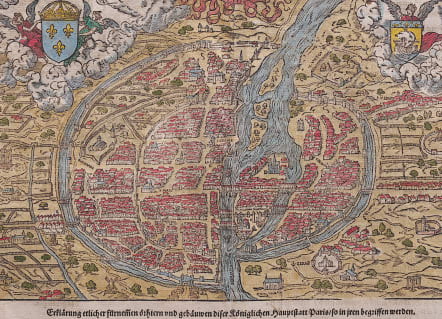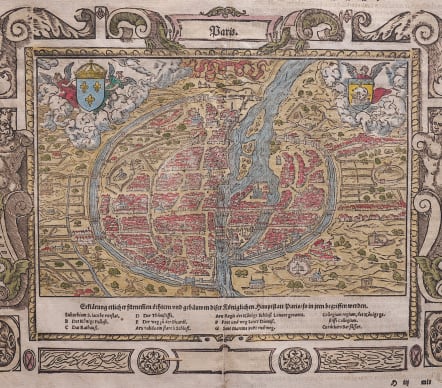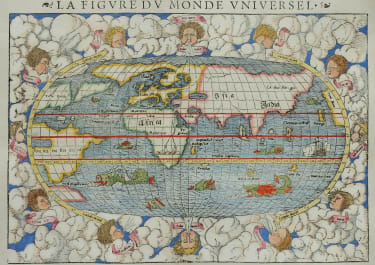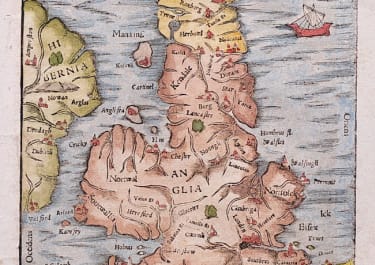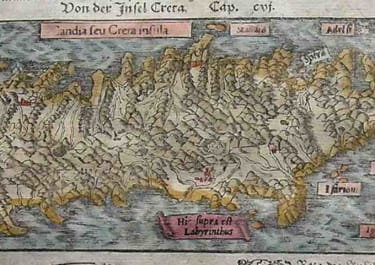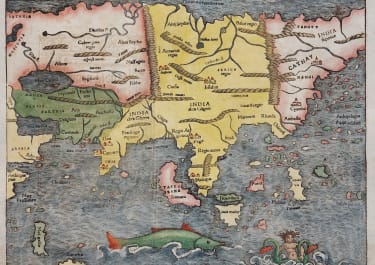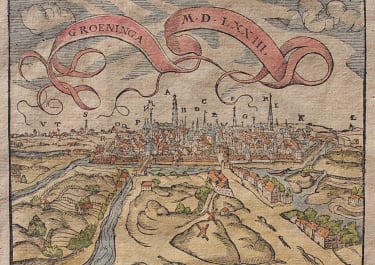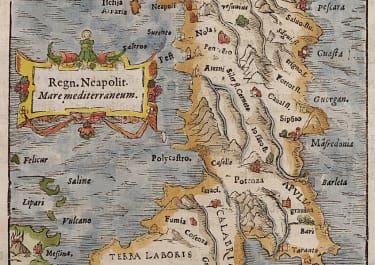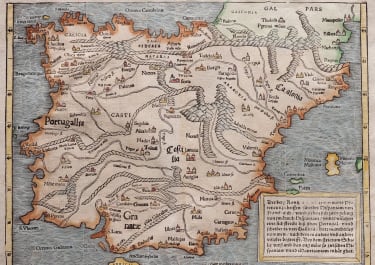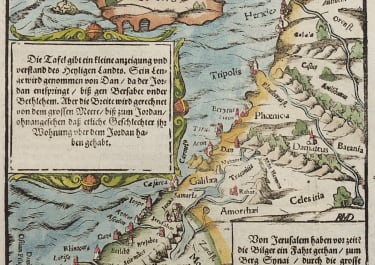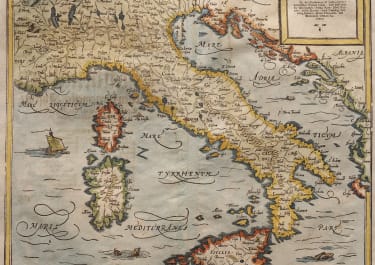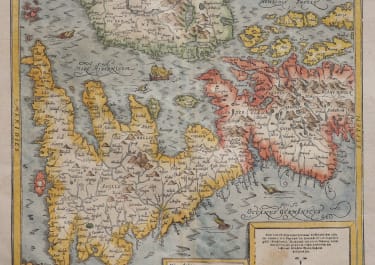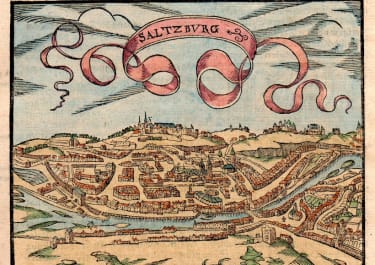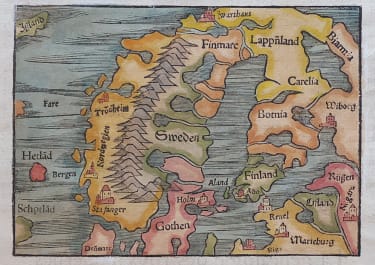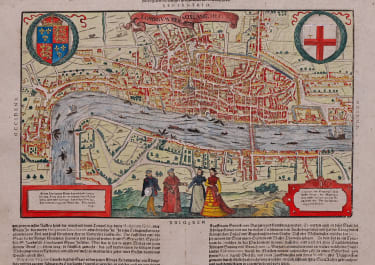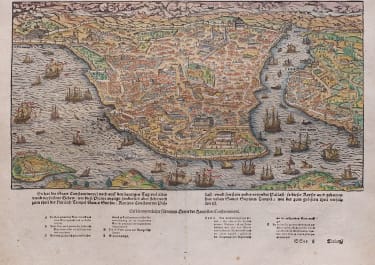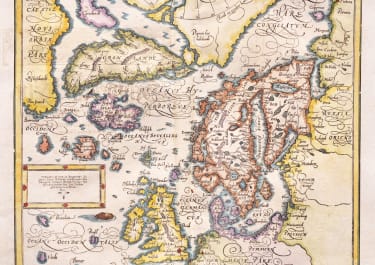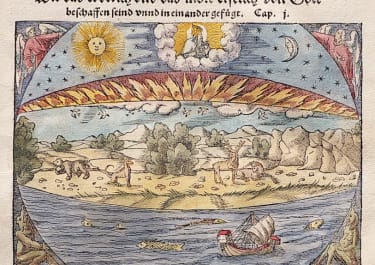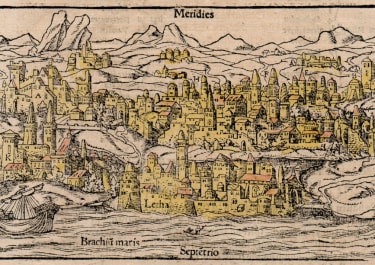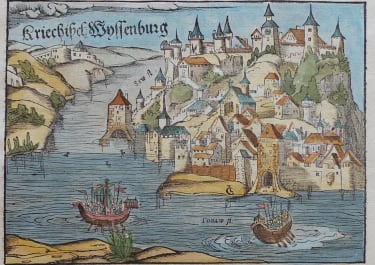PARIS
Sold
Good early map of Paris.
This finely executed plan shows the city and surroundings of 16th century Paris with its churches, universities and palaces labeled both on the map and keyed to a legend. The Sorbonne as well as the cathedral of Notre Dame can be found among other structures of note. The arms of the city are at upper right and royal arms at upper left. The 1572 Braun & Hogenberg plan was its primary source.
. The view is surrounded by an elaborate Gothic border. From the German edition of Sebastian M?nster's Cosmography, titled Cosmographey oder beschreibung aller L?nder, published 1574 by Heinrich Petri in Basel.
V.good hand colour.
Very good condition
code : M3879
Cartographer : Sebastian Munster
Date : 1574 Basel
Size : 27*33 cms sheet 32*40 cms
availability : Sold
Price : Sold
Originally a scholar studying Hebrew, Greek and mathematics, Sebastian Munster (1489-1552) eventually specialised in mathematical geography and cartography. It was this double ability - as a classicist and mathematician - that was to prove invaluable when Munster set himself to preparing new editions of Solinus’ “Memorabilia” and Mela’s “De Situ Orbis”, two classical descriptive geographies containing maps, and his own two greatest works, the “Geographia” and “Cosmographia”. These reflect the widespread interest in classical texts, which were being rediscovered in the fifteenth century, and being disseminated in the later fifteenth and sixteenth century, through the new medium of printing.
The “Geographia” was a translation of Ptolemy’s landmark geographical text, compiled in about 150 AD., illustrated with maps based on Ptolemy’s calculations, but also, in recognition of the increased geographical awareness, contains a section of modern maps. In the first edition of the “Geographia”, Munster included 27 ancient Ptolemaic maps and 21 modern maps, printed from woodblocks. Subsequent editions of the “Cosmographia” were to contain a vast number of maps and plans.
One consequence of Munster’s work was the impetus it gave to regional mapping of Germany, but Munster was also the first cartographer to produce a set of maps of the four continents on separate maps. Most importantly, through his books (the “Geographia” and “Cosmographia” alone ran to over forty editions in six languages), Munster was responsible for diffusing the most up-to-date geographical information throughout Europe.


